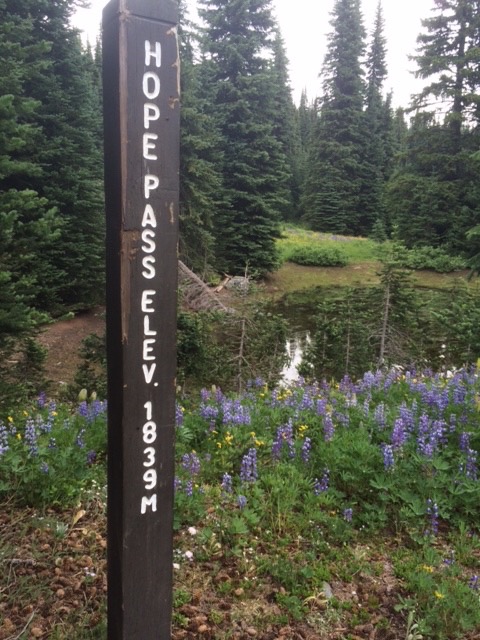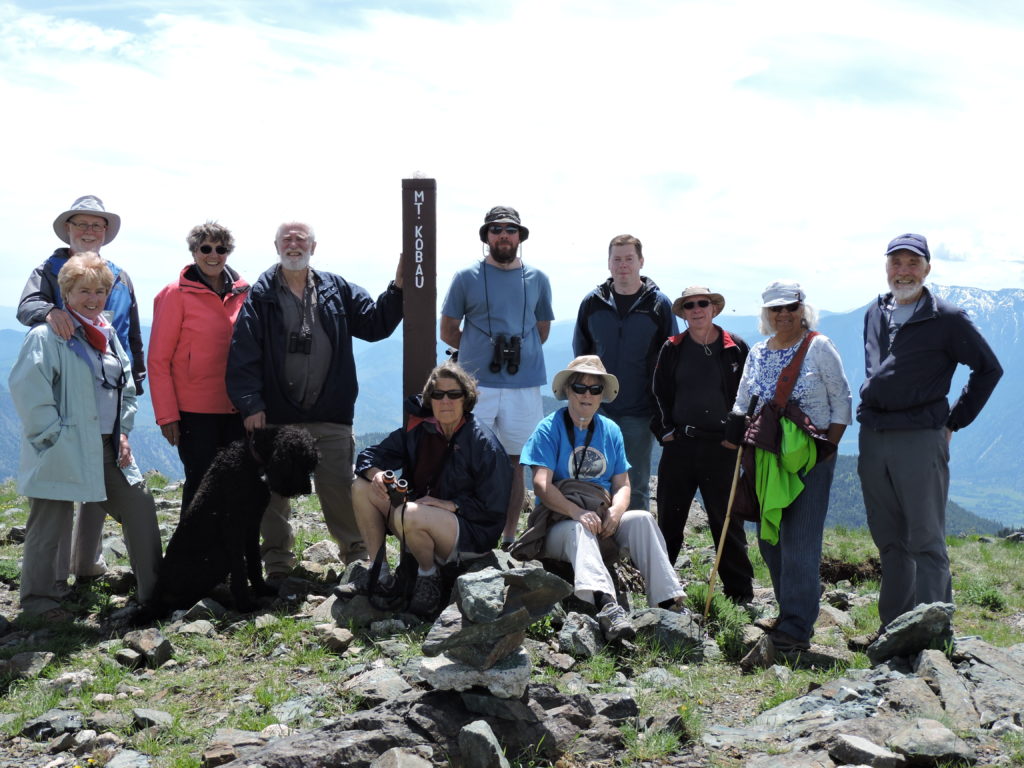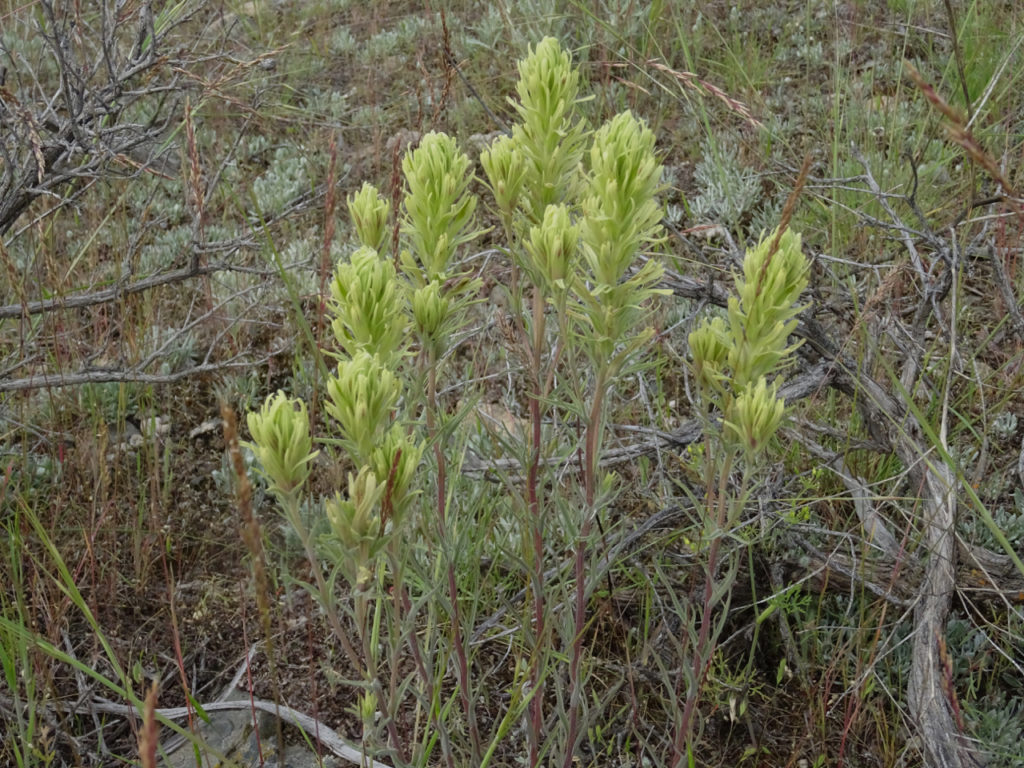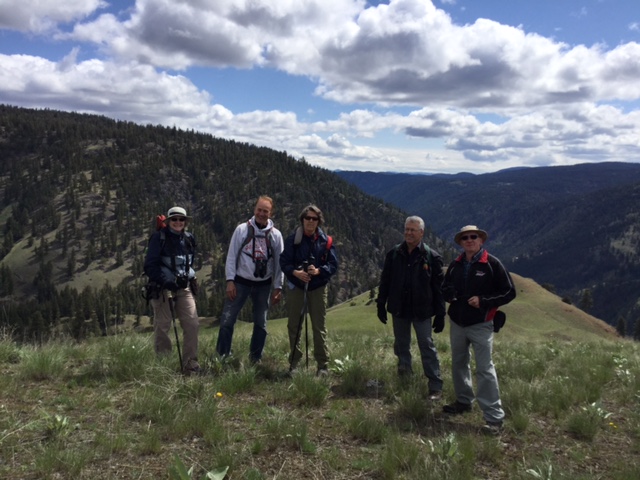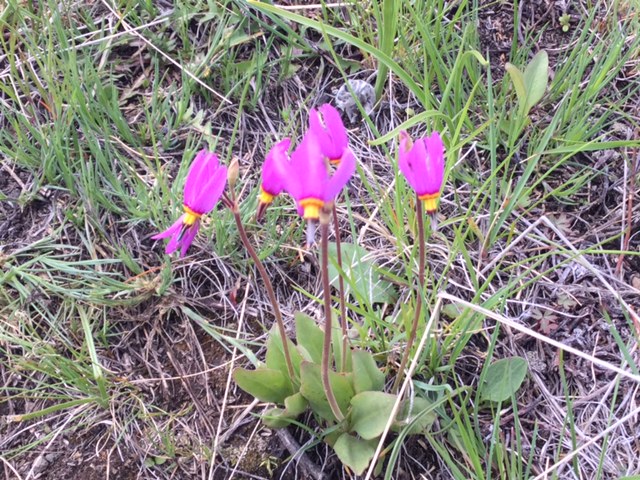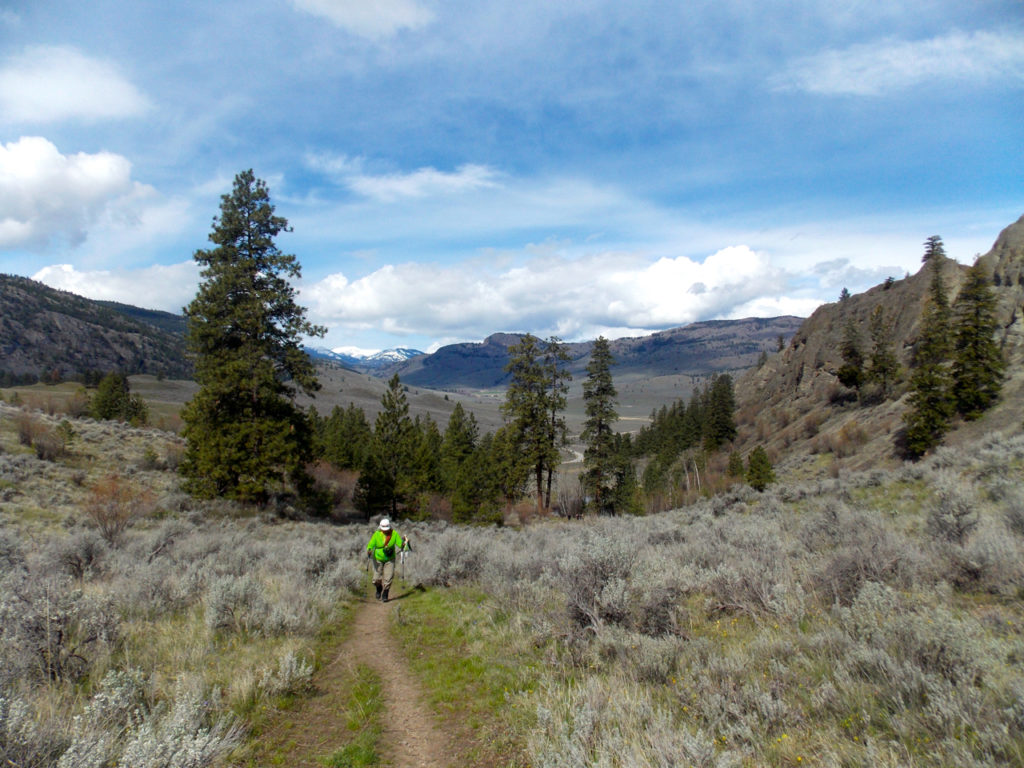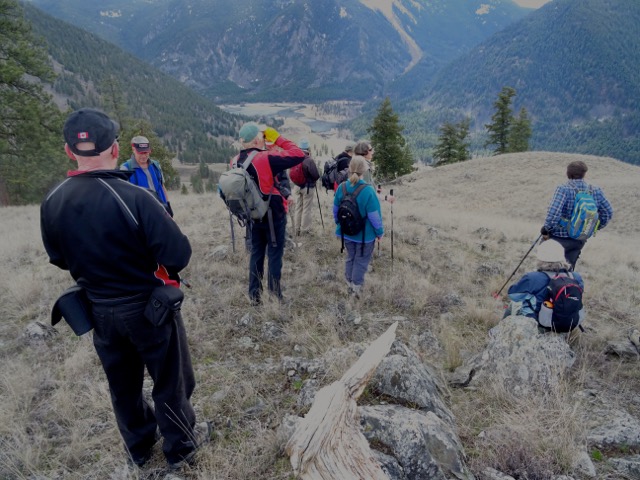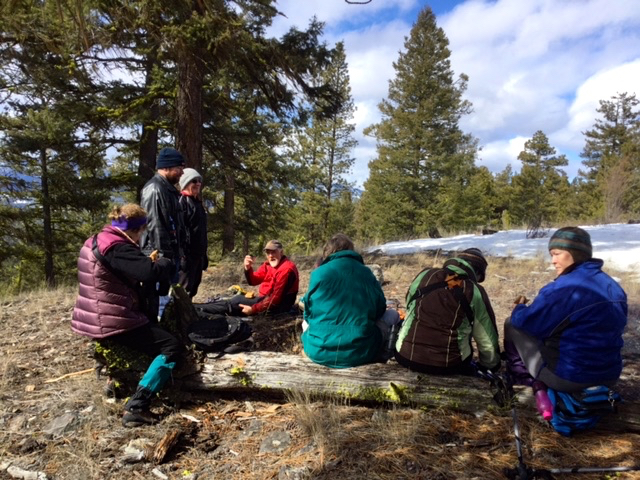
A smoked filled Similkameen Valley did not bode well for our hike. As we got closer to Hedley we could see that the Diamond Creek Fire was having an effect. However, once we arrived at our destination, on the other side of Apex Mountain, conditions improved. The day proved to be a fine one, overcast skies with brief bursts of sunshine.
From the Apex Road we made a turn at Shatford Road which leads to the Sheep Rock trailhead. The road was somewhat rough, but our driver managed to get us through with considerable skill. This road continues on to the Brent Mountain Trail.
The trailhead was easy to find unlike the previous time that John and I were there. From the trailhead, the path goes sharply down; some fallen trees forced us to go across a very muddy area, a surprise considering how dry it has been. In this area we did see some berries, one yet to be identified and the other, the 5-Leaved Bramble (Rubus pedatus). Thereafter, the trail was well defined, and we could see that much deadfall had been cleared, probably at the start of the hiking season, but in spite of this more trees had fallen after the cleanup.
The trail meandered uphill through a widely spaced forest, and as we gain elevation we were surprised to be surrounded by Whitebark Pine! Still in the forest, John alerted us to Sandhill Cranes flying above us, barely visible, about 60 or so. At the lower meadow dry pond beds indicated that it had been a busy habitat during the summer. We stopped for lunch in this meadow and were again rewarded with the sound of Sandhill Cranes flying overhead. This time they were visible; no trees obstructed our view. In total we estimated 200 to 300 cranes. We were absolutely delighted!
After lunch we continued our uphill climb to reach the upper meadows where we could see the remnants of what must have been an incredible floral display. Now, the plants and flowers were a different colour; instead of vibrant primary colours, they were muted yellows and browns, but some were brilliant oranges and reds. The blueberry bushes, for example, were now a striking vermilion. At the very top we encountered some hardy lupines and yarrow still in bloom, amazing!
As we congratulated each other in having reached the top, the weather deteriorated, and the wind was bitterly cold. Having had some considerable foresight, we donned our toques, mittens, and warm jackets. From our vantage point, we could see the fire lookout on Brent Mountain. We, also, got a good look at the surrounding valleys; some covered in smoke others with dark, heavy threatening clouds. We did a quick retreat; those mean clouds promised rain. The rain came down just as we got to the car. How lucky was that?
The hike was about 10 to 12 kilometres and took 4 hours. Although not technically difficult, it was a long day. It was worth it; an opportunity to see nature in a different season and admire all it had to offer.


